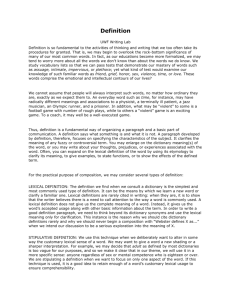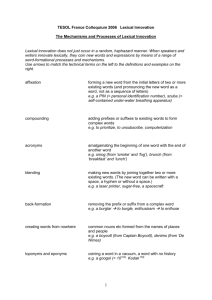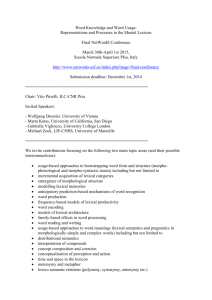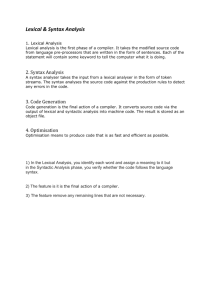Theoretical lessons from practical sign language lexicography
advertisement
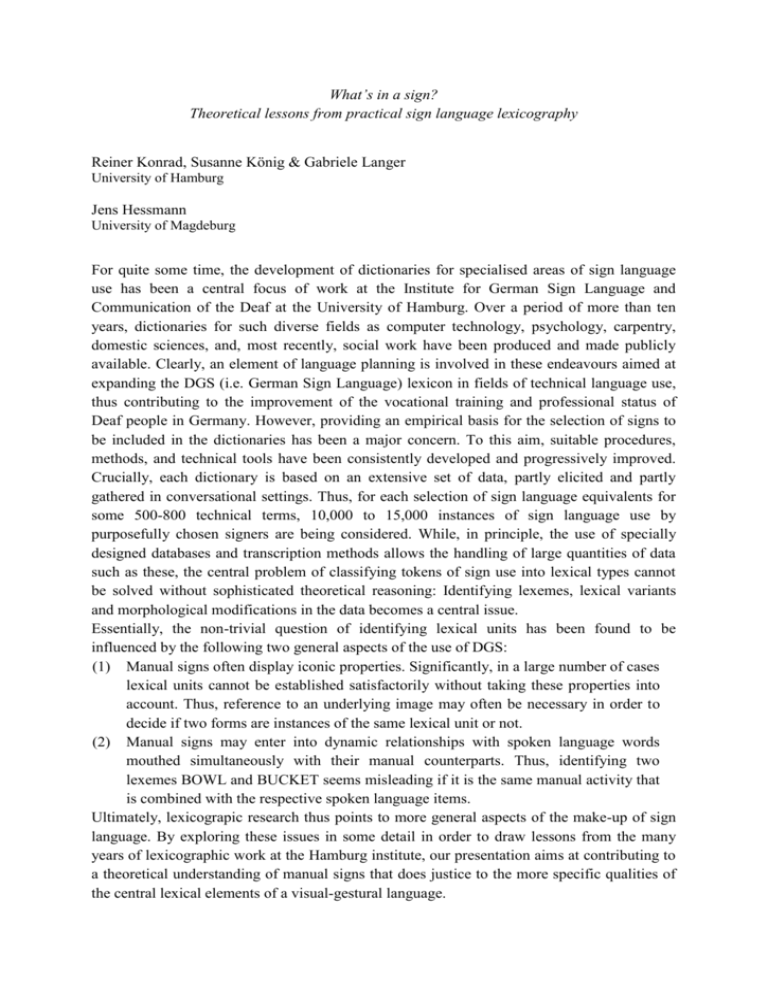
What’s in a sign? Theoretical lessons from practical sign language lexicography Reiner Konrad, Susanne König & Gabriele Langer University of Hamburg Jens Hessmann University of Magdeburg For quite some time, the development of dictionaries for specialised areas of sign language use has been a central focus of work at the Institute for German Sign Language and Communication of the Deaf at the University of Hamburg. Over a period of more than ten years, dictionaries for such diverse fields as computer technology, psychology, carpentry, domestic sciences, and, most recently, social work have been produced and made publicly available. Clearly, an element of language planning is involved in these endeavours aimed at expanding the DGS (i.e. German Sign Language) lexicon in fields of technical language use, thus contributing to the improvement of the vocational training and professional status of Deaf people in Germany. However, providing an empirical basis for the selection of signs to be included in the dictionaries has been a major concern. To this aim, suitable procedures, methods, and technical tools have been consistently developed and progressively improved. Crucially, each dictionary is based on an extensive set of data, partly elicited and partly gathered in conversational settings. Thus, for each selection of sign language equivalents for some 500-800 technical terms, 10,000 to 15,000 instances of sign language use by purposefully chosen signers are being considered. While, in principle, the use of specially designed databases and transcription methods allows the handling of large quantities of data such as these, the central problem of classifying tokens of sign use into lexical types cannot be solved without sophisticated theoretical reasoning: Identifying lexemes, lexical variants and morphological modifications in the data becomes a central issue. Essentially, the non-trivial question of identifying lexical units has been found to be influenced by the following two general aspects of the use of DGS: (1) Manual signs often display iconic properties. Significantly, in a large number of cases lexical units cannot be established satisfactorily without taking these properties into account. Thus, reference to an underlying image may often be necessary in order to decide if two forms are instances of the same lexical unit or not. (2) Manual signs may enter into dynamic relationships with spoken language words mouthed simultaneously with their manual counterparts. Thus, identifying two lexemes BOWL and BUCKET seems misleading if it is the same manual activity that is combined with the respective spoken language items. Ultimately, lexicograpic research thus points to more general aspects of the make-up of sign language. By exploring these issues in some detail in order to draw lessons from the many years of lexicographic work at the Hamburg institute, our presentation aims at contributing to a theoretical understanding of manual signs that does justice to the more specific qualities of the central lexical elements of a visual-gestural language.






